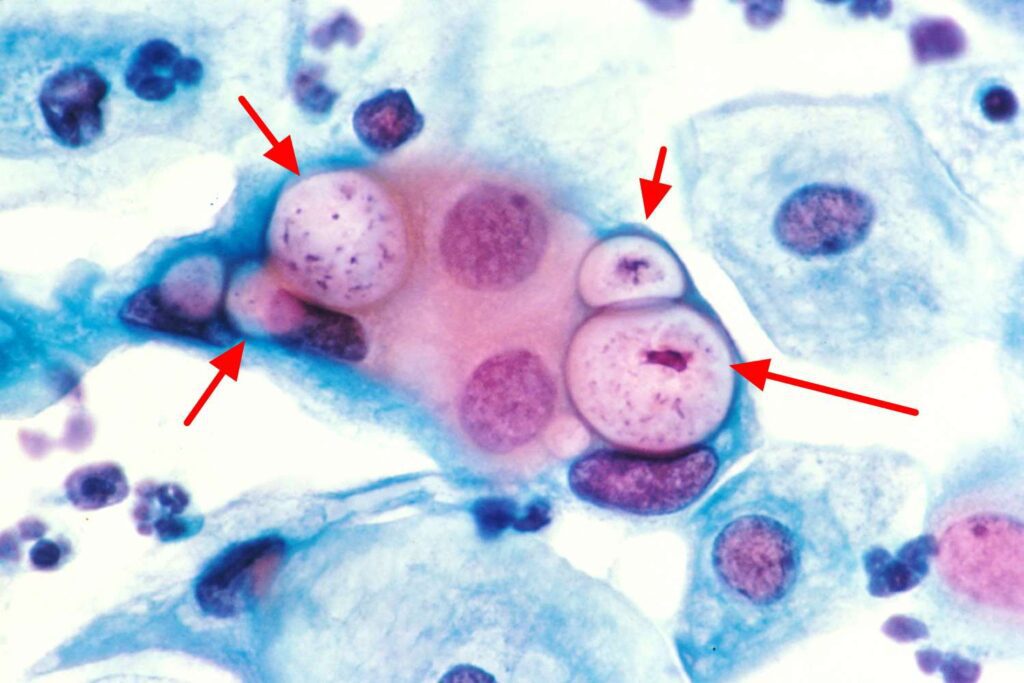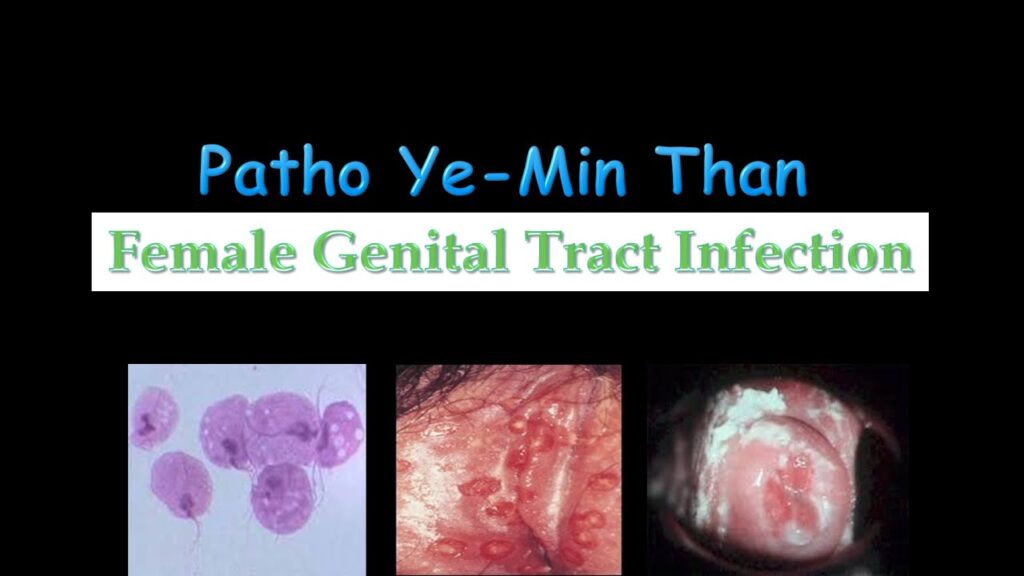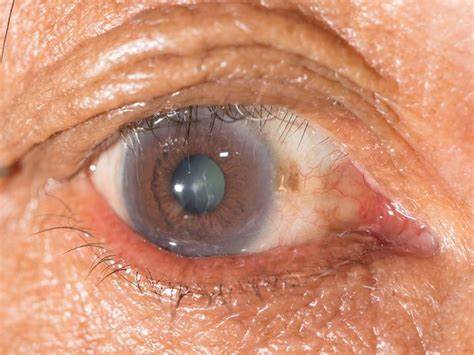Introduction
Chlamydia trachomatis is a name you’ve probably come across if you’ve studied microbiology, sexually transmitted infections (STIs), or human health. It’s not just a bacterium—it’s one of the most common causes of preventable infectious diseases worldwide. Despite its small size and simple structure, C. trachomatis has a big impact on human health, especially reproductive health. This overview will give you a complete understanding of what it is, how it spreads, what diseases it causes, how it is diagnosed, treated, and prevented—written in a clear and easy-to-understand way.
Table of Contents
What is Chlamydia trachomatis?
Chlamydia trachomatis is a Gram-negative, obligate intracellular bacterium, meaning it cannot survive or reproduce outside a host cell. It infects humans and is best known for causing chlamydia, the most commonly reported bacterial sexually transmitted infection (STI) globally.

Classification
- Domain: Bacteria
- Phylum: Chlamydiota
- Class: Chlamydiia
- Order: Chlamydiales
- Family: Chlamydiaceae
- Genus: Chlamydia
- Species: Chlamydia trachomatis
Unique Features of Chlamydia trachomatis
- Obligate intracellular: Lives and replicates only inside human cells.
- Biphasic life cycle: Has two distinct forms:
- Elementary Body (EB): Infectious but metabolically inactive.
- Reticulate Body (RB): Non-infectious but metabolically active and replicating.
- No peptidoglycan layer: Despite being Gram-negative, its cell wall is unusual.
- Energy parasite: It relies on the host cell’s ATP to survive and reproduce.
Epidemiology: How Common Is It?
- Globally: More than 130 million new cases occur every year.
- In Young Adults: Most common in sexually active individuals aged 15–24.
- Asymptomatic cases: Up to 70% of infected women and 50% of infected men show no symptoms.
This silent nature makes it dangerous because people unknowingly spread it and risk complications.
Modes of Transmission
- Sexual contact: The most common route. Can be vaginal, anal, or oral.
- Vertical transmission: From an infected mother to her baby during childbirth.
- Eye-to-eye contact: In poor sanitation areas, it can spread via flies or fingers (trachoma).
Serovars of Chlamydia trachomatis
There are different serovars (subtypes) that are linked to different diseases:
- A, B, Ba, C: Cause trachoma (eye infections).
- D–K: Cause urogenital infections (STIs), neonatal conjunctivitis, and pneumonia.
- L1, L2, L3: Cause lymphogranuloma venereum (LGV), a more invasive STI.
Diseases Caused by Chlamydia trachomatis
1. Genital Tract Infections

- In women:
- Cervicitis (inflammation of the cervix)
- Urethritis (urinary discomfort)
- Pelvic Inflammatory Disease (PID)
- Infertility and ectopic pregnancy (long-term consequences)
- In men:
- Urethritis
- Epididymitis (pain and swelling in the testicles)
- Proctitis (rectal inflammation, especially in MSM—men who have sex with men)
2. Lymphogranuloma Venereum (LGV)
- Caused by serovars L1–L3.
- Starts with a small genital ulcer, followed by swollen and painful lymph nodes (buboes).
- More common in tropical regions and among MSM in urban settings.
3. Eye Infections (Trachoma)

- Chronic conjunctivitis, leading to eyelid scarring and eventual blindness.
- Spread via flies, fingers, or shared towels.
- Common in areas with poor hygiene and sanitation.
4. Neonatal Infections
- Newborns can acquire the infection during birth.
- Results in:
- Neonatal conjunctivitis (within 5–14 days of life)
- Neonatal pneumonia (with a characteristic staccato cough)
Pathogenesis: How It Causes Disease
- Entry: The EB attaches to host epithelial cells and is taken in.
- Transformation: Inside the cell, EB turns into RB and begins replicating.
- Multiplication: RBs divide, turn back into EBs.
- Release: Host cell bursts or expels the EBs, spreading the infection.
The bacteria trigger inflammation, leading to symptoms. Repeated or chronic infections can lead to tissue damage and scarring, especially in the reproductive tract or eyes.
Symptoms of Chlamydia Infection
In Women:
- Unusual vaginal discharge
- Pain during urination or sex
- Lower abdominal pain
- Abnormal bleeding (between periods or after sex)
In Men:
- White, cloudy, or watery discharge from the penis
- Burning sensation while urinating
- Pain and swelling in the testicles (less common)
In both sexes:
- Anal discomfort, discharge, or bleeding (if rectum is infected)
- Sore throat (if oral exposure)
Diagnosis of Chlamydia trachomatis
1. Nucleic Acid Amplification Test (NAAT) – Gold Standard
- Detects bacterial DNA or RNA.
- Sample: urine, vaginal swab, cervical swab, rectal swab, or throat swab.
- Highly sensitive and specific.
2. Direct Fluorescent Antibody Test (DFA)
- Staining method using fluorescent dyes.
- Less commonly used now.
3. Cell culture (rarely used)
- Requires specialized labs.
- Useful in legal or research settings.
4. Rapid point-of-care tests
- Useful in remote or resource-limited settings.
- Faster but less accurate than NAAT.
Treatment of Chlamydia trachomatis Infection
First-line antibiotics:
- Doxycycline 100 mg twice daily for 7 days (most recommended)
- Azithromycin 1g single dose (alternative, especially during pregnancy)
For LGV:
- Doxycycline 100 mg twice daily for 21 days
For Neonatal Infections:
- Erythromycin or Azithromycin syrup (under pediatric guidance)
Important notes:
- Both partners should be treated.
- Avoid sexual activity for 7 days after treatment.
- Test of cure is not always needed unless symptoms persist or the person is pregnant.
Complications if Left Untreated
- Women:
- Pelvic Inflammatory Disease (PID)
- Infertility
- Chronic pelvic pain
- Ectopic pregnancy
- Men:
- Infertility (rare)
- Chronic urethritis or prostatitis
- Newborns:
- Pneumonia
- Eye damage
- Others:
- Increased risk of acquiring or transmitting HIV
Prevention of Chlamydia Infection
- Safe sex practices:
- Use condoms consistently and correctly.
- Limit the number of sexual partners.
- Regular screening:
- Especially for sexually active women under 25, MSM, and those with new or multiple partners.
- Prompt treatment and contact tracing:
- To prevent re-infection and community spread.
- Neonatal care:
- Screen pregnant women.
- Treat early to avoid passing infection to the baby.
- Health education:
- Promote awareness about asymptomatic nature and long-term complications.
Chlamydia vs. Other STIs
| Feature | Chlamydia | Gonorrhea | Syphilis |
|---|---|---|---|
| Pathogen | C. trachomatis | Neisseria gonorrhoeae | Treponema pallidum |
| Gram stain | Not seen well | Gram-negative diplococci | Spirochete |
| Symptoms | Often asymptomatic | Often purulent discharge | Painless ulcer |
| Complications | PID, infertility | PID, infertility | Neurological damage |
| Treatment | Doxycycline, Azithromycin | Ceftriaxone + Doxy | Penicillin |
Chlamydia in Public Health Context
- Many countries recommend routine screening for high-risk groups.
- Partner notification and treatment are key strategies.
- Ongoing research into developing vaccines.
- Integration with HIV/STI control programs improves effectiveness.
Fun (and Important) Facts
- The name “Chlamydia” comes from the Greek word chlamys, meaning “cloak,” describing how the bacteria cloaks itself inside cells.
- A person can be re-infected after treatment—there’s no natural long-term immunity.
- Some C. trachomatis strains can even cause eye infections in koalas!
Conclusion
Chlamydia trachomatis is much more than a bacteria you memorize in class. It’s a global health challenge that affects millions—often silently. But with effective testing, timely treatment, and good prevention, we can reduce its burden significantly. Whether you’re a healthcare student, a professional, or just someone who wants to understand your health better, knowing about this tiny organism is a big step toward healthier communities.
FREQUENTLY ASKED QUESTIONS
What is Chlamydia trachomatis?
Chlamydia trachomatis is a Gram-negative, obligate intracellular bacterium that causes a wide range of infections in humans, most commonly sexually transmitted infections (STIs) and eye infections like trachoma.
How is Chlamydia trachomatis transmitted?
It is mainly transmitted through:
Sexual contact (vaginal, anal, oral)
Vertical transmission from mother to baby during childbirth
Eye contact via flies or fingers in poor sanitation (trachoma)
What are the main diseases caused by C. trachomatis?
Genital infections (urethritis, cervicitis, PID)
Neonatal infections (conjunctivitis, pneumonia)
Trachoma (eye infection)
Lymphogranuloma venereum (LGV)
Related Articles




